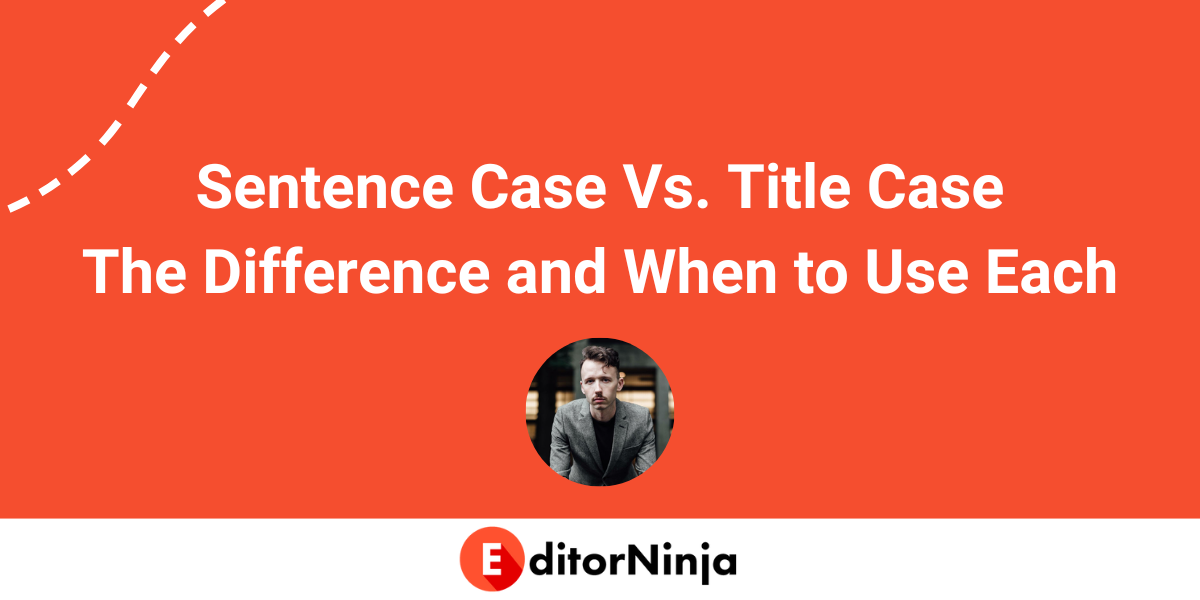Sentence case and title case are two ways of capitalizing words in titles, headlines, headings, and, well, sentences. In this article, I’ll compare these two styles, providing examples of each and offering information on when to use them.
Sentence Case and Title Case Key Takeaways
Sentence Case
- Used in all sentences in the body of a piece.
- Capitalizes the first word of the sentence and proper nouns only.
- Used for headlines, headings, and subheadings in some styles, such as AP (headlines) and APA (subheading levels three, four, and five).
Title Case
- Capitalizes the first letter of all important words, such as nouns, pronouns, and verbs.
- Leaves small words like prepositions, conjunctions, and articles un-capitalized.
- With considerable overlap, different style guides have different rules regarding capitalization. For example, AP capitalizes the infinitive form of to, whereas MLA does not.
- Used for most titles — books, films, articles, and more.
- Used for headlines, headings, and subheadings in some styles, such as MLA.
Comparing Sentence Case and Title Case
Below are some examples comparing sentence and title cases using the same sentences.
Sentence Case:
Michael is an editor who writes for EditorNinja.
Note that “EditorNinja” is capitalized, as it is a proper noun.
Title Case:
Michael Is an Editor Who Writes for EditorNinja.
This style of title case follows MLA guidelines. I’ve capitalized nouns, pronouns, and verbs. Notice, I’ve left the article “an” and the preposition “for” uncapitalized.
Sentence Case:
Michael lived in Seattle for five years.
Seattle, a proper noun, is capitalized.
Title Case:
Michael Lived in Seattle for Five Years
The prepositions “in” and “for” are left uncapitalized.
When to Use Sentence Case
Use sentence case in all sentences in all of your writing — articles, emails, books, blogs, essays, everything.
Sentence case is also used for headlines in AP style. For example, the Associated Press (AP) website uses sentence case for the headlines of all their articles. Many newspapers follow this style.
Other style guides have instructions regarding headings and subheadings in essays and articles. For example, in APA (American Psychological Association) style, sentence case is used for heading levels three, four, and five.
(Always consult your style guide, publisher, or professor if you need more information on whether to use sentence case for headings.)
When to Use Title Case
Use title case for all titles — for books, articles, essays, magazines, etc., unless your publisher or website has a preference for sentence case. Many blogs, for example, use sentence case even for titles.
You’ll use title case for titles of all books and academic papers, as well as for chapter titles, headings, and subheadings in styles like MLA and Chicago.
Additionally, when referencing the title of a work within your writing, use title case. For example:
The film Return of the Jedi, despite being called “Episode VI,” was the third film released in the Star Wars franchise.
The title “Return of the Jedi” is written in title case, even within a sentence.
What Do You Capitalize in Title Case?
These are the title case rules for a few common styles: Chicago, MLA, and AP.
AP Title Case
These rules are taken from the 2020 edition of the Associated Press Stylebook:
- Capitalize the principal words.
- Capitalize prepositions and conjunctions of four letters or more.
- Lowercase the articles the, a, and an.
- Capitalize the first and last words (overrides the rules above).
- Capitalize the to in infinitives (e.g., I Need To Eat).
Chicago Title Case
The 15th edition of The Chicago Manual of Style lays out these rules:
- Always capitalize “major” words (nouns, pronouns, verbs, adjectives, adverbs, and some conjunctions).
- Lowercase the conjunctions and, but, for, or, and nor.
- Lowercase the articles the, a, and an.
- Lowercase prepositions, regardless of length, except when they are stressed, are used adverbially or adjectivally, or are used as conjunctions.
- Lowercase the words to and as.
- Lowercase the second word after a hyphenated prefix (e.g., Mid-, Anti-, Hyper-, etc.) in compound modifiers (e.g., Mid-month, Anti-war, etc.).
- Always capitalize the first and last words of titles and subtitles (overrides the rules above).
MLA Title Case
The 9th edition of the Modern Language Association Handbook has this to say about title case:
- Capitalize the first word of the title/heading and of any subtitle/subheading.
- Capitalize all major words (nouns, verbs including phrasal verbs such as “play with”, adjectives, adverbs, and pronouns) in the title/heading, including the second part of hyphenated major words (e.g., Self-Report instead of Self-report).
- Do not capitalize articles, prepositions (regardless of length), and coordinating conjunctions.
- Lowercase the second word after a hyphenated prefix (e.g., Mid-, Anti-, Hyper-, etc.) in compound modifiers (e.g., Mid-month, Anti-war, etc.).
- Do not capitalize to in infinitives (e.g., I Need to Eat).
It Never Hurts to Ask
Sentence case and title case are two ways of writing titles, headings, subheadings, and more. Title case capitalizes all major words, and leaves most small words uncapitalized. Sentence case only capitalizes the first word of the sentence and proper nouns (including titles of other pieces).
If you’re unsure what style of title case to use, you can always check with your publisher or professor.
Need Help with Sentence Case, Title Case, and More?
EditorNinja is here to help! We’re a team of professional content editors across line editing, copy editing, and proofreading. All EditorNinja editors are MFA trained and look forward to editing your written content!
Schedule a free editorial assessment today to see how using EditorNinja can save you days of time, buy back hours that you can use to create more content or work on other things, and make on average a 3.5x ROI, or at least $12,000+, on your investment.
This article was edited by EditorNinja before publishing.

